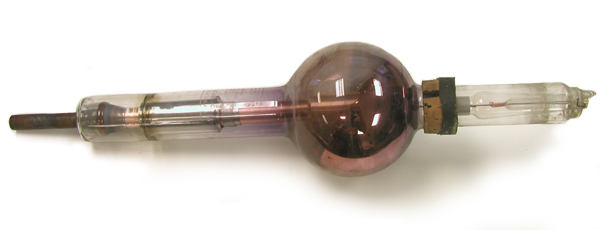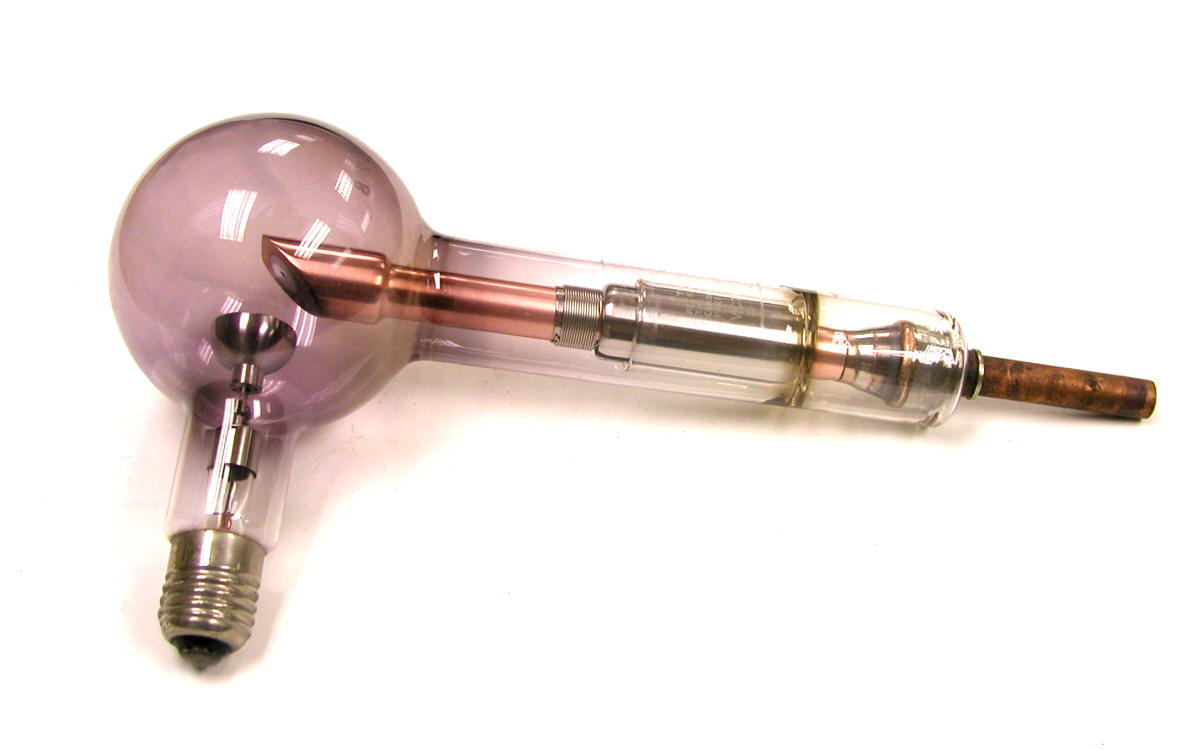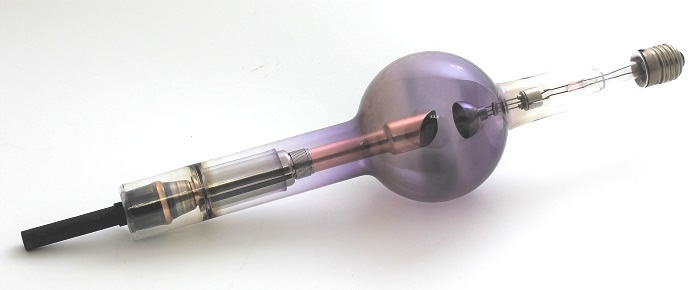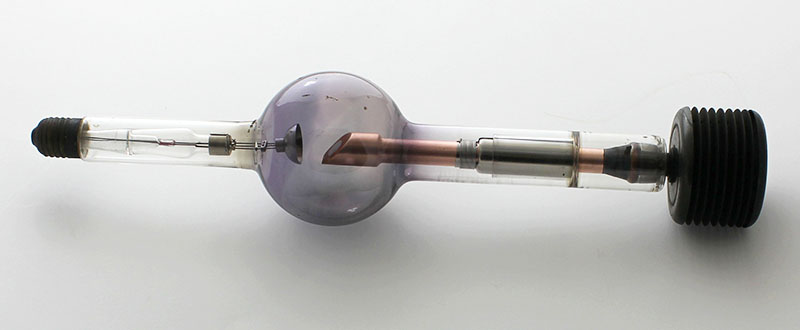Radiator Coolidge X-ray Tubes
To learn about Coolidge Radiator tubes, you couldn't do much better than read William Coolidge's 1919 paper The Radiator Type of Tube—radiator tubes (and universal tubes) were first produced by the General Electric Company. Perhaps the most obvious difference between the radiator type tube (sometimes referred to as an “R” tube) and the Universal tube is that the former radiates its excess heat through an external radiator (e.g., with copper fins) whereas the latter radiates heat through the glass envelope of the tube. Because the glass of the radiator tube doesn’t get as hot as that of the Universal tube, its bulb can be smaller (all other things being equal). Another obvious difference is that the anode of the radiator tube is a tungsten disk embedded in a copper head. The latter is attached to a copper rod which, in turn, is connected to the radiator. Radiator tubes were almost exclusively used for diagnostic work whereas universal tubes were for therapeutic as well as diagnostic use.
The two most common types of Radiator tubes are the fine focus and the medium focus tubes. The former had a maximum current limit of 10 milliamps with a 5” spark gap (various reports equated a 5” spark gap to a 56,000 or 88,000 volt potential) and it could be operated continuously for up to 30 seconds. Since this tube had the smaller focal spot (7/64 to 10/64 inch), fine image detail was possible. The other common type of Radiator tube had a 30 milliamps rating with a 5” spark gap. It could be operated continuously for up to 20 seconds. This tube had a relatively large focal spot (11/64 to 15/64 inch), which sacrificed image detail but permitted shorter exposures. A less common radiator tube, rated for a 100 milliamp current with a 5” spark gap, had a large focal spot (14/64 to 20/64 inch) and could be operated continuously for up to 5 seconds at the rated current.
The type of tube was sometimes indicated according to the spark gap and the maximum rated current as follows: 5-10, 5-30 and 5-100.
An advantage of the Radiator tube was that it could be operated without a rectified current because it is self-rectifying. If unrectified AC current were used, electron emission from the tungsten target is not possible during the half of the cycle when the target (anode) has a negative charge and the “cathode” has a positive charge. This is because the temperature of the tungsten target does not get hot enough for it to emit electrons.
References
- C. Jerman. Modern X-Ray technic. Bruce Publishing Co. St.Paul. 1928.
- R.L. Eisenberg. Radiology – An Illustrated History. Mosby. St. Louis. 1991.
- W.D. Coolidge. The development of modern roentgen-ray generating apparatus. Am. J. Roentgenology. 24: 605-620. 1930.
- M.J. Gross, Z.J. Atlee. Progress in the design and manufacture of x-ray tubes. Radiology: 365-377; 1933.
-
General Electric Radiator Tube General Electric Radiator Tube

-
General Electric RB-1-4 Radiator Tube General Electric RB-1-4 Radiator Tube

-
General Electric RB-2-4.5 Radiator Tube General Electric RB-2-4.5 Radiator Tube

-
Victor RD Dental X-ray Tube Victor RD Dental X-ray Tube

-
Victor X-Ray Corporation 10 MA Radiator Tube Victor X-Ray Corporation 10 MA Radiator Tube

-
Victor X-Ray Corporation 30 MA Radiator Tube Victor X-Ray Corporation 30 MA Radiator Tube

-
Westinghouse 2249 Tube Westinghouse 2249 Tube

